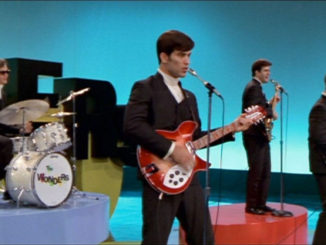Greyhound premiers today as an exclusive on Apple TV+.
Despite its high gloss production value and modern film-making technique, Greyhound feels more like a throwback to older World War Two movies of Hollywood’s past than it does a modern day picture.
Based on the C.S. Forester novel The Good Shepard and adapted by star Tom Hanks, the film tells the story of Captain Ernest Krause (Hanks), commander of the destroyer USS Keeling which goes by the radio call sign “Greyhound.” The Keeling is the lead escort for a convoy of 37 Allied ships making their way to Liverpool with much needed supplies for the war in Europe. The trip perilous enough with the wolfpacks of German submarines patrolling the waters of the North Atlantic eager to sink any Allied ships they can. But it becomes especially dangerous during the three days when the convoy is traversing the area known as ‘the Black Pit,” so named because it places the ships outside the range of any aerial support. The crossing is Krause’s first, both for himself and as commander of a convoy.
Hanks is the only real three-dimensional character in the film. A stoic Catholic, Krause seems at once concerned for the men under his command, but also somewhat detached from them. Perhaps it is because he knows that not all of them will survive, and not forming personal bonds with them will help make it easier for him when some of them are inevitably killed in action. Since everything is being told through Krause’s eyes, we never get much of a chance to learn about his fellow officers and crew as people. And that can make it hard for the audience to care when the casualties begin to happen.
Karuase’s reserve also doesn’t give Hanks any big acting moments to play. Instead, he makes the most of the moments where the script pauses for Krause’s silent introspections, allowing for a far more subtle and not showy performance.
What Hanks does effectively here script-wise is use these earlier engagements to educate the viewer on how naval combat played out in the North Atlantic. By the time we reach the film’s climactic showdown where the ship is fending off an attack from multiple submarines, we are able to clear follow Krause’s commands as the action unfurls.
Special note should be made of Blake Neely’s score for the film. Rather than use the expected strong, stirring martial marches or tense string passages one would expect for a story like this, Neely’s soundtrack has a more keening quality to it. It recalls underwater recordings of whale songs, an interesting choice that helps to enhance the oceanic setting of the film.






